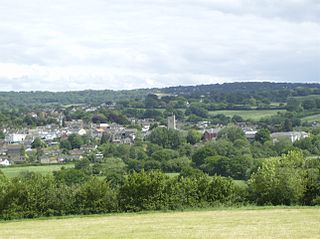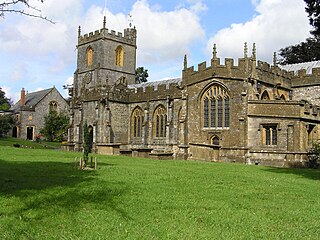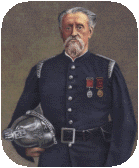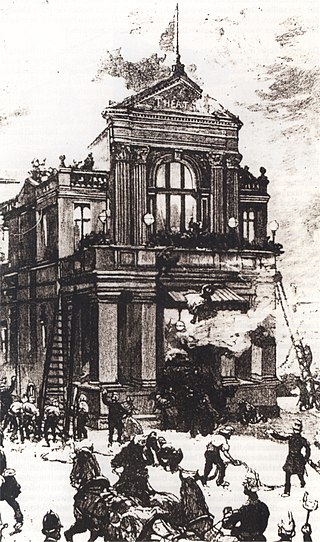
Axminster is a market town and civil parish on the eastern border of the county of Devon in England. It is 28 miles (45 km) from the county town of Exeter. The town is built on a hill overlooking the River Axe which heads towards the English Channel at Axmouth, and is in the East Devon local government district. At the 2001 census, it had a population of 5,626, increasing to 5,761 at the 2011 census. The town contains two electoral wards whose combined population is 7,110. The market is still held every Thursday.

A fire department or fire brigade, also known as a fire company, fire authority, fire district, fire and rescue, or fire service in some areas, is an organization that provides fire prevention and fire suppression services as well as other rescue services.

Chard is a town and a civil parish in the English county of Somerset. It lies on the A30 road near the Devon and Dorset borders, 15 miles (24 km) south west of Yeovil. The parish has a population of approximately 14,000 and, at an elevation of 121 metres (397 ft), Chard is the southernmost and one of the highest towns in Somerset. Administratively Chard forms part of the district of South Somerset.

Totnes railway station serves the town of Totnes in Devon, England. It was opened by the South Devon Railway Company in 1847. Situated on the Exeter to Plymouth Line, it is located 222 miles 66 chains down the line from London Paddington via Box.

The London Fire Brigade (LFB) is the fire and rescue service for London, the capital of the United Kingdom. It was formed by the Metropolitan Fire Brigade Act 1865, under the leadership of superintendent Eyre Massey Shaw. It has 5,992 staff, including 5,096 operational firefighters and officers based at 102 fire stations.

Bridgwater railway station serves the town of Bridgwater in Somerset, England. It is on the Bristol to Taunton Line and is operated by Great Western Railway. It is 151 miles 47 chains from the zero point at London Paddington via Box.

Captain Sir Eyre Massey Shaw KCB was the first Chief Officer of the Metropolitan Fire Brigade, and the Superintendent of its predecessor, the London Fire Engine Establishment, from 1861 to 1891. He introduced modern firefighting methods to the Brigade, and increased the number of stations. Prior to entering firefighting, Shaw was in the British Army, followed by a spell as Chief Constable of Belfast Borough Police.

The Bristol and Exeter Railway (B&ER) was an English railway company formed to connect Bristol and Exeter. It was built on the broad gauge and its engineer was Isambard Kingdom Brunel. It opened in stages between 1841 and 1844. It was allied with the Great Western Railway (GWR), which built its main line between London and Bristol, and in time formed part of a through route between London and Cornwall.

The history of organized firefighting began in ancient Rome while under the rule of the first Roman Emperor Augustus. Prior to that, Ctesibius, a Greek citizen of Alexandria, developed the first fire pump in the third century BC, which was later improved upon in a design by Hero of Alexandria in the first century BC.
The following outline is provided as an overview of and topical guide to firefighting:

Devon and Somerset Fire and Rescue Service (DSFRS) is the statutory fire and rescue service covering the counties Devon and Somerset in South West England – an area of 3,924 square miles (10,160 km2). It serves a population of 1.75 million, and is the fifth largest fire and rescue service in the United Kingdom.

Kent Fire and Rescue Service is the statutory fire and rescue service for the administrative county of Kent and the unitary authority area of Medway, covering a geographical area south-east of London, to the coast and including major shipping routes via the Thames and Medway rivers. The total coastline covered is 225 km ; it has 57 fire stations, and four district fire safety offices. The FRS provides emergency cover to a population of 1.88 million.

The history of fire brigades in the United Kingdom charts the development of fire services in the United Kingdom from the creation of the United Kingdom to the present day.

Dublin Fire Brigade is the fire and rescue service and ambulance service for County Dublin, including Dublin city, in Ireland. It is a local authority service, operated by Dublin City Council on behalf of that council and those of Fingal, Dún Laoghaire–Rathdown and South Dublin. There are currently 14 fire stations staffed by DFB, 12 of which are full-time, the other 2 are "retained" and operate on call 24/7 365 days a year with up to 500 calls per year. Full-time stations are staffed by shifts across 4 watches. There are currently over 963 active firefighter/paramedic personnel making it by far the largest fire service based on personnel and resources in Ireland.
Firefighting is the act of extinguishing destructive fires. A firefighter fights these fires with the intent to prevent destruction of life, property and the environment. Firefighting is a highly technical profession, which requires years of training and education in order to become proficient. A fire can rapidly spread and endanger many lives; however, with modern firefighting techniques, catastrophe can usually be avoided. To help prevent fires from starting, a firefighter's duties include public education and conducting fire inspections. Because firefighters are often the first responders to victims in critical conditions, firefighters often also provide basic life support as emergency medical technicians or advanced life support as licensed paramedics. Firefighters make up one of the major emergency services, along with the emergency medical service, the police, and many others.

Exeter is a cathedral city and the county town of Devon, South West England. It is situated on the River Exe, approximately 36 mi (58 km) northeast of Plymouth and 65 mi (105 km) southwest of Bristol.
The Belfast Fire Brigade came into existence in 1800, and until 1861 was managed jointly with the local police service. It then provided a dedicated firefighting service to the people of the city of Belfast until its amalgamation with the Northern Ireland Fire Authority on 1 October 1973, when it became the Fire Authority for Northern Ireland, today the Northern Ireland Fire and Rescue Service.

Number 470 Fire Bell is a heritage-listed fire bell at 56 Suttor Street, West Bathurst, Bathurst Region, New South Wales, Australia. It was designed by John C. Wilson and built in 1855 by Gorbals Brass and Bell Foundry, Glasgow. It is also known as Sydney Insurance Companies Fire Bell and Bathurst Fire Bell. It was added to the New South Wales State Heritage Register on 11 July 2014.

The Cork City Fire Brigade is the local authority fire and rescue service for Cork City and its surrounding suburbs. It is a branch of Cork City Council. There are currently three fire stations in use by Cork City Fire Brigade; of which 2 are full-time and 1 is part time (retained). Cork City Fire Brigade is staffed by 153 active personnel, making it the second-biggest fire service in Ireland after the Dublin Fire Brigade.

On 5 September 1887, a fire broke out in the backstage area of the Theatre Royal in Exeter, England, during the production of The Romany Rye. The fire caused panic throughout the theatre, with 186 people dying from a combination of the direct effects of smoke and flame, crushing and trampling, and trauma injuries from falling or jumping from the roof and balconies.



















